Proudly
Associated With
Associated With





Looking to alleviate muscle tension, chronic pain, fatigue, or inflammation? Find out how our cupping therapy can help. Our expert physiotherapists and chiropractors frequently perform cupping therapy to treat musculoskeletal conditions like arthritis, carpal tunnel syndrome, and other common health issues. Many athletes choose to go through cupping therapy to treat aches and improve blood circulation.
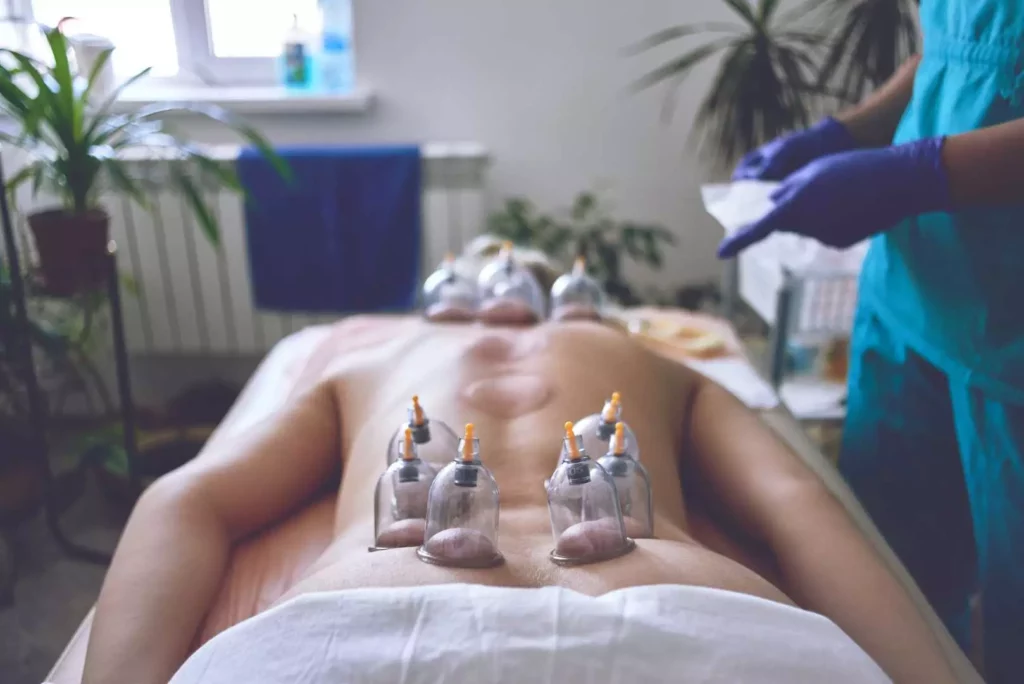





Cupping therapy is an ancient healing practice that has gained popularity in recent years, particularly in the field of alternative medicine. This comprehensive overview delves into the science, benefits, and considerations of cupping therapy.
A few conditions for which we use cupping treatment for include:
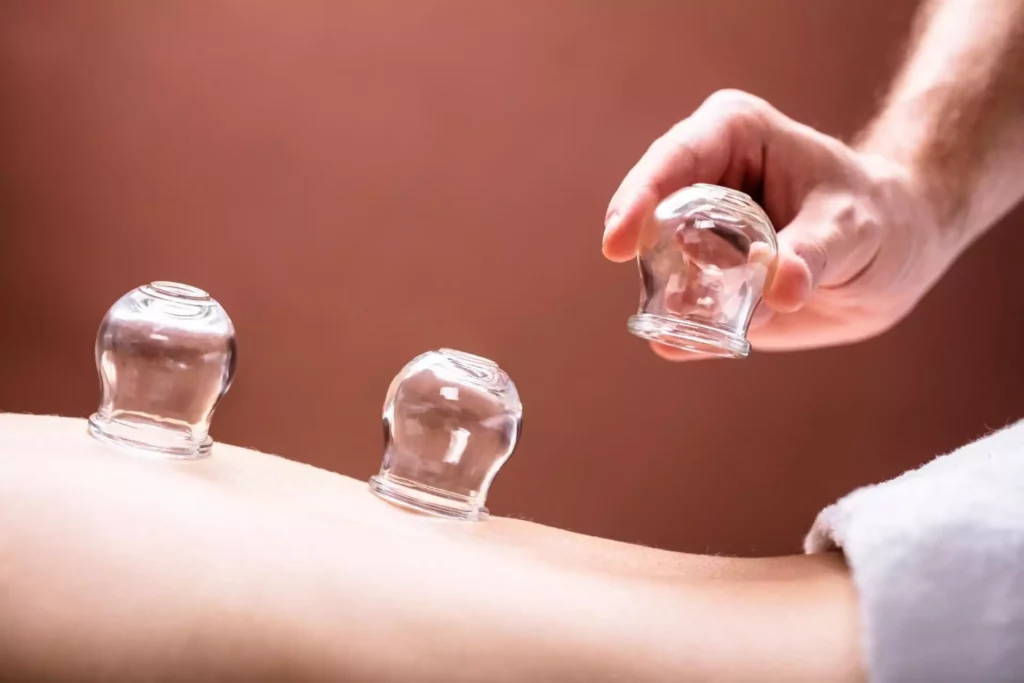
Cupping therapy works by creating suction on the skin, which is believed to promote blood flow and facilitate healing. From a physiological perspective, the process involves:
The suction created by the cups dilates blood vessels, enhancing blood flow to the treated area. A study by Emerich et al. (2014) found that cupping significantly increased microcirculation in treated areas for up to 10 minutes post-treatment[1].
The negative pressure can help release fascial adhesions, potentially improving muscular function and reducing pain. Research by Tham et al. (2006) suggests that this may be one of the primary mechanisms behind cupping's effectiveness in treating musculoskeletal pain[2].
Some studies, such as the one conducted by Khalil et al. (2013), indicate that cupping may stimulate the immune system, potentially aiding in the body's natural healing processes[3].
Enjoy personalized care in our private treatment rooms, designed for your comfort and confidentiality.
We are proud to support a 5-star Google and FaceBook rating from our patients.
Book your appointments yourself. View your invoices, future and past appointments, and more.
Conveniently located in downtown Ottawa. Free street and building parking.
Our team is available evenings and Saturdays for your convenience.
We provide multiple services & treatments in an all-in-one location. We sell equipment orthotics and give home-care advice and stretches.
The cupping is normally performed by placing glass or plastic cups on your skin and sucking the air out of them with the help of small rubber pumps. This creates a vacuum in the cup, resulting in the blood vessels expanding and an increased blood flow to the area.
The vacuum can also be created by placing a cup on your skin, and then we use a function to create a vacuum in the cup.
As opposed to massage therapy, which involves applying direct pressure to release tension, cupping uses negative pressure to lift the muscle fibres and increase blood flow.
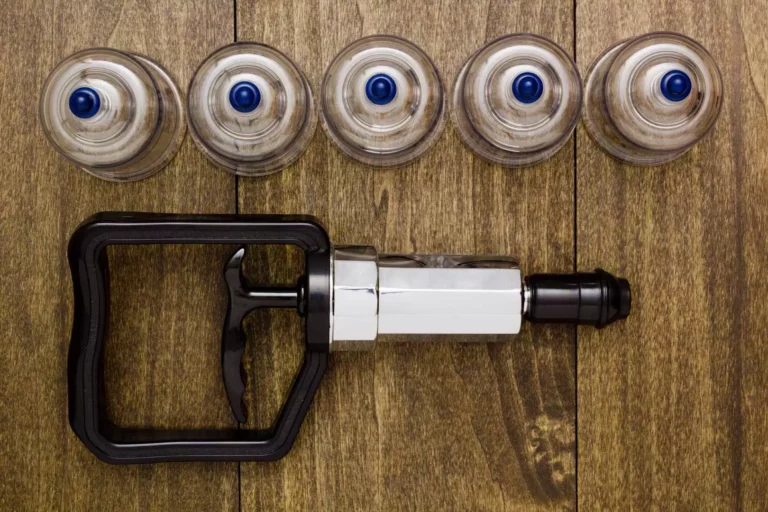
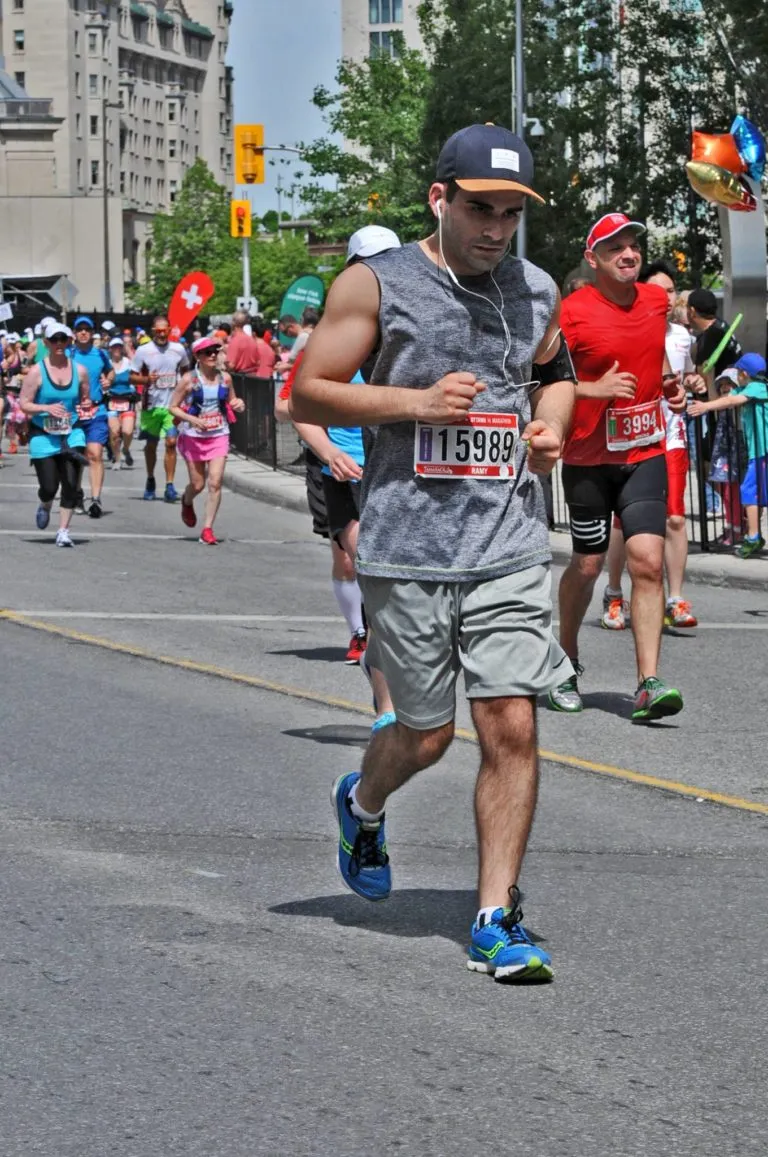
Cupping therapy has emerged as a popular treatment among athletes seeking to enhance their performance and accelerate recovery.
This boost in circulation aids in the faster healing of muscles, reduces inflammation, and relieves pain, making it an invaluable tool for athletes dealing with intense training and competition schedules.
Moreover, cupping has been noted for its effectiveness in improving flexibility and range of motion, key components for athletic prowess.
By incorporating cupping into their regular wellness routines, athletes can enjoy improved recovery times, reduced muscle soreness, and enhanced overall physical performance.
It is a relatively painless process. You will feel a pressure sensation, almost like a deep massage, and the pressure can be adjusted to your comfort level.
The cups are usually applied on the back, but sometimes, they are applied on the legs, too, for treating different muscle tension conditions.
The cups are usually applied for 15 to 20 minutes. Sometimes, the cups can be slid up and down muscle groups for additional benefits. Your therapist will keep checking on you to ensure you are comfortable and relaxed.
Depending on your condition and symptoms, the cupping treatment can be combined with an acupuncture treatment during the same session.
The process described above is commonly known as dry cupping Sometimes, dry cupping is done before puncturing your skin for wet cupping.
Sometimes dry cupping is done before puncturing your skin for wet cupping. Wet cupping is a variation of the procedure in which your therapist or practitioner will puncture your skin to draw out some blood during the suction process (which we don’t do).
Note: We only do dry cupping at Kent Chiro-Med Clinic.
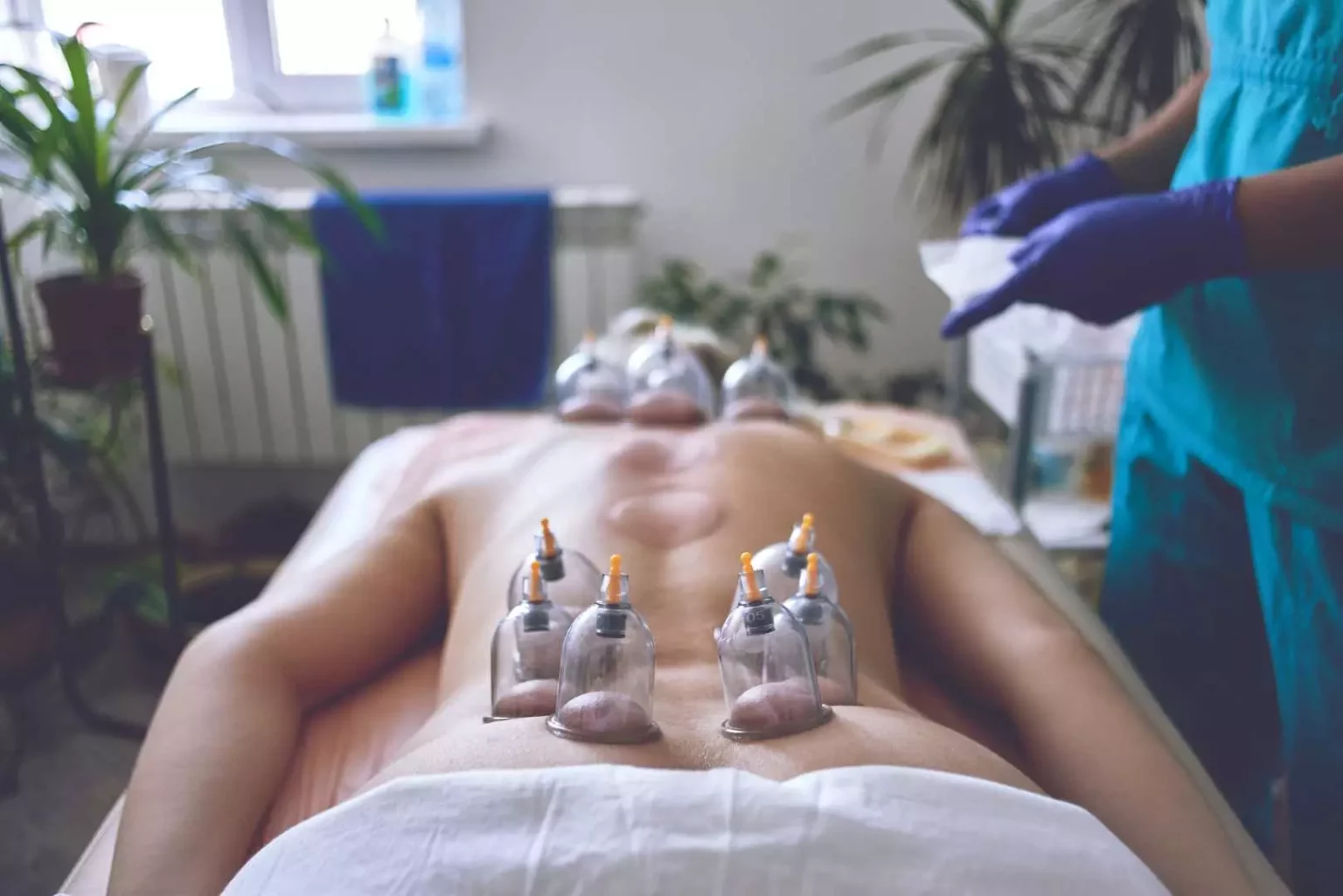
Cupping therapy has been associated with various health benefits, including:
While the treatment is mostly used by people suffering from chronic pain and inflammation, anyone can make an appointment to find out if they are a good candidate to undergo this procedure.
Reach out today to learn more and get started.
Experience Effective Relief with our Expert Cupping Therapy in Downtown Ottawa
Or call us at 613-695-8600 to speak with one of our friendly staff members.
Our hours are as follows:
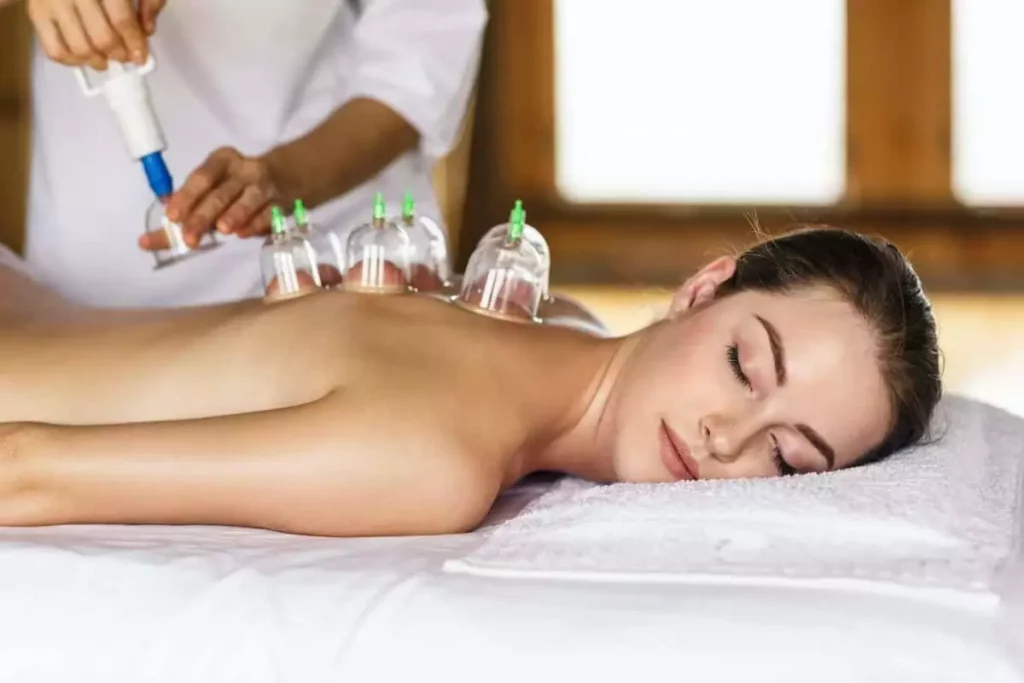
Our team of experienced professionals combines traditional chiropractic techniques with innovative therapies like cupping to offer comprehensive treatment plans tailored to each individual’s needs.

Chiropractor
a.ka Mama Bear
Over 15 years of experience in chiropractic care
Specialized training in scoliosis-specific chiropractic techniques
Clinical Director at Kent Chiro-Med Wellness Clinic

Chiropractor
a.k.a Sporty Spice
Certified chiropractor with extensive experience in treating musculoskeletal conditions
Graduate of the Canadian Memorial Chiropractic College, magna cum laude
Passionate about helping patients achieve their health and wellness goals

Chiropractor
Passionate about helping individuals return to their daily routines and re-engage in activities they love
Extensive knowledge and experience from his own journey as an athlete
Committed to supporting patients in achieving their personal health goals

Physiotherapist
While cupping therapy has shown promise in treating various conditions, it’s important to acknowledge that, like any medical treatment, it comes with potential risks and limitations:
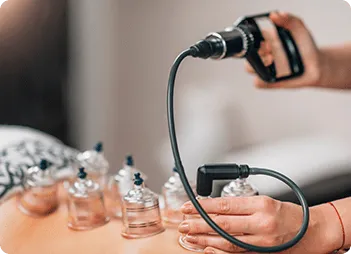
Cupping therapy, or hijama, is an ancient Chinese treatment that has been practiced in many countries and cultures of the world.
There has been some research on this technique, which suggests that it is highly effective in the treatment of pain, reducing systolic blood pressure, and the treatment of cellulitis.
It is generally safe and painless.
When the suction is applied, you might feel a little pressure similar to that of a deep tissue massage.
Your skin might get bruises, which can last from a few hours to a few days, depending on the pressure applied and the technique used.
As cupping helps to ease muscular tension, you can also experience some tenderness in the targeted areas.
It is not advisable or safe during pregnancy, breastfeeding, or if you are suffering from low blood pressure, hemophilia, or other bleeding disorders.
We choose the size of the cup according to the size and curvature of the muscle group we are targeting.
Normally, we use larger cups on the back due to wide musculature and smaller cups on the legs due to narrow circumference and lesser flesh for suction.
Larger cups have a greater effect on releasing muscle tension.
[1] Zhang, Y., et al. (2021). “Cupping therapy for patients with chronic neck pain: A systematic review and meta-analysis.” Journal of Pain Research, 14, 2657-2671. Link to study
[2] Cao, H., et al. (2020). “Cupping therapy for fibromyalgia: a systematic review and meta-analysis.” Journal of Traditional Chinese Medical Sciences, 7(4), 317-324. Link to study
[3] Al-Bedah, A. M., et al. (2019). “The medical perspective of cupping therapy: Effects and mechanisms of action.” Journal of Traditional and Complementary Medicine, 9(2), 90-97. Link to study
[4] Rozenfeld, E., & Kalichman, L. (2016). “New is the well-forgotten old: The use of dry cupping in musculoskeletal medicine.” Journal of Bodywork and Movement Therapies, 20(1), 173-178. Link to study
[5] Hon, K. L., et al. (2013). “Efficacy and problems associated with using traditional Chinese medicine.” International Journal of Environmental Research and Public Health, 10(12), 6383-6394. Link to study
[6] Kim, T. H., et al. (2014). “Adverse events related to cupping therapy in studies conducted in Korea: A systematic review.” European Journal of Integrative Medicine, 6(4), 434-440. Link to study
[7] Cao, H., et al. (2015). “An updated review of the efficacy of cupping therapy.” PLoS One, 10(4), e0122535. Link to study
[8] Chi, L. M., et al. (2016). “The effectiveness of cupping therapy on relieving chronic neck and shoulder pain: A randomized controlled trial.” Evidence-Based Complementary and Alternative Medicine, 2016, 7358918. Link to study